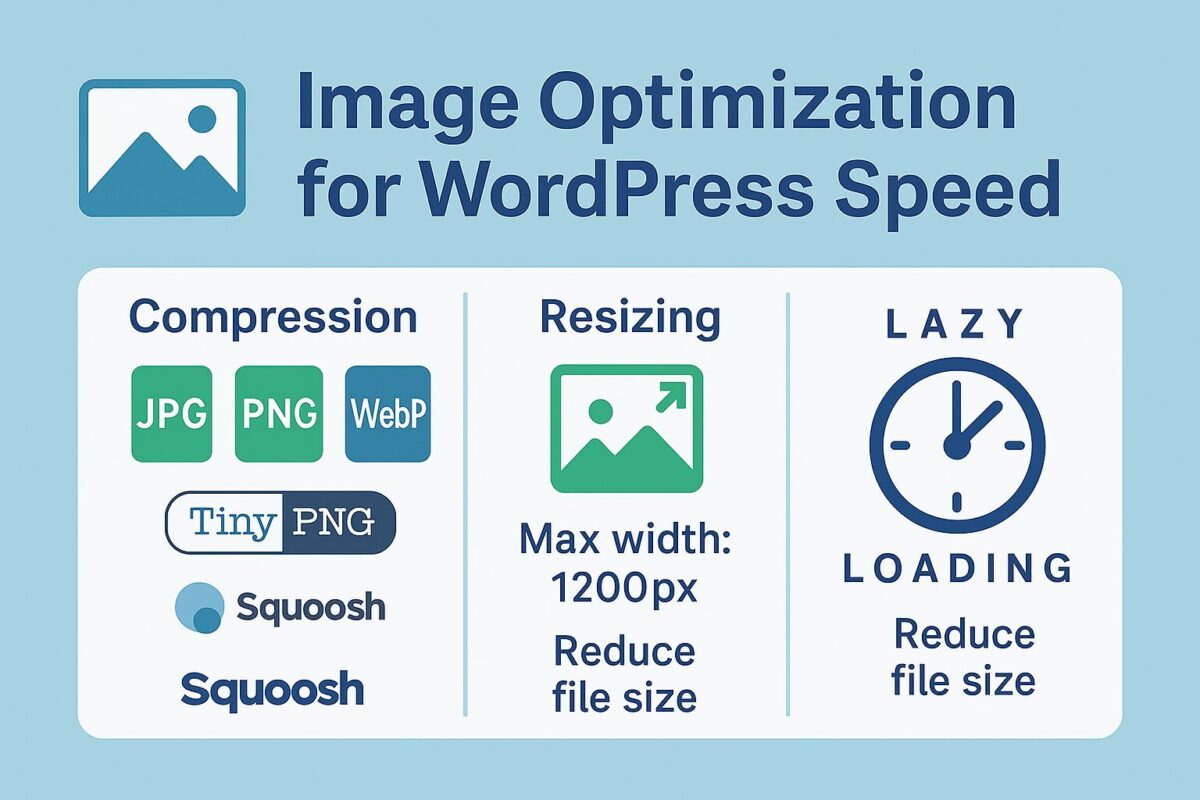How to Optimize Images for Faster WordPress Site Performance

Why Image Optimization Matters
Large, uncompressed images increase page weight and delay first content paint. Google’s PageSpeed Insights often flags images as one of the top performance issues, especially on mobile connections.
Optimized images:
- Load faster
- Improve user experience
- Reduce bounce rates
- Help improve SEO and ranking
Choose the Right File Format
- JPEG – Best for photos and realistic images (lossy but small)
- PNG – Best for graphics with transparency or crisp lines
- WebP – Modern format that combines quality and small size (supported in all modern browsers)
Use WebP whenever possible. You can convert JPEG/PNG to WebP using tools like Squoosh or plugins.
Resize Images Before Upload
Never upload 4000×3000 px images unless absolutely necessary. Instead:
- Resize to max 1200–1600 px width for main content
- Use smaller sizes for thumbnails and icons
- Maintain a consistent aspect ratio for layout harmony
Compress Without Losing Quality
Use free tools like:
- TinyPNG – Excellent lossy compression for PNG and JPG
- Squoosh – Resize + convert + preview quality vs. size
Try to keep image files under 200 KB for blog content, and under 100 KB where possible.
Enable Lazy Loading
Lazy loading delays loading images until they are about to be visible. This improves first screen load dramatically.
- WordPress supports lazy loading by default (since v5.5)
- Ensure your theme or plugins do not override it
- Check that image HTML contains
loading="lazy"
Identify Problematic Images
Use these tools to find unoptimized images:
- PageSpeed Insights
- Chrome DevTools → Network → filter by images and sort by size
- GTmetrix → Waterfall tab
Look for “Serve images in next-gen formats” and “Efficiently encode images” warnings.
Should You Use Image Optimization Plugins?
Yes — but with caution. Some recommended options:
- ShortPixel – High-quality compression, supports WebP
- Imagify – Easy to use, automatic optimization on upload
- reSmush.it – Free option, decent compression
Don’t rely solely on plugins. Pre-processing images before upload keeps your media library clean and light.
Next Step
Want to level up your image optimization? Next, explore:
Or request a free audit from SpeedWP Pro — we’ll check your media performance and recommend the best compression + lazy loading strategy for your site.
